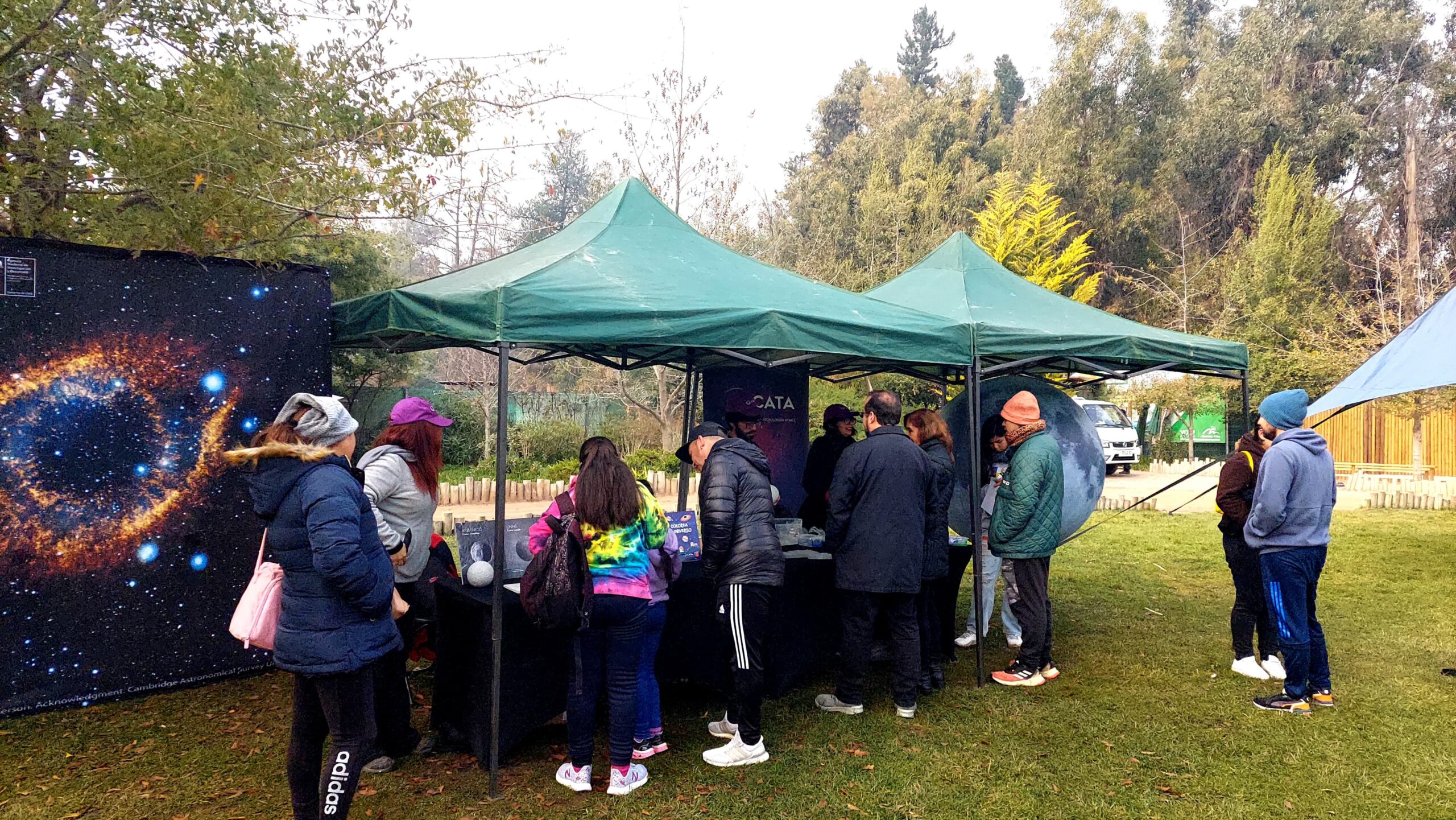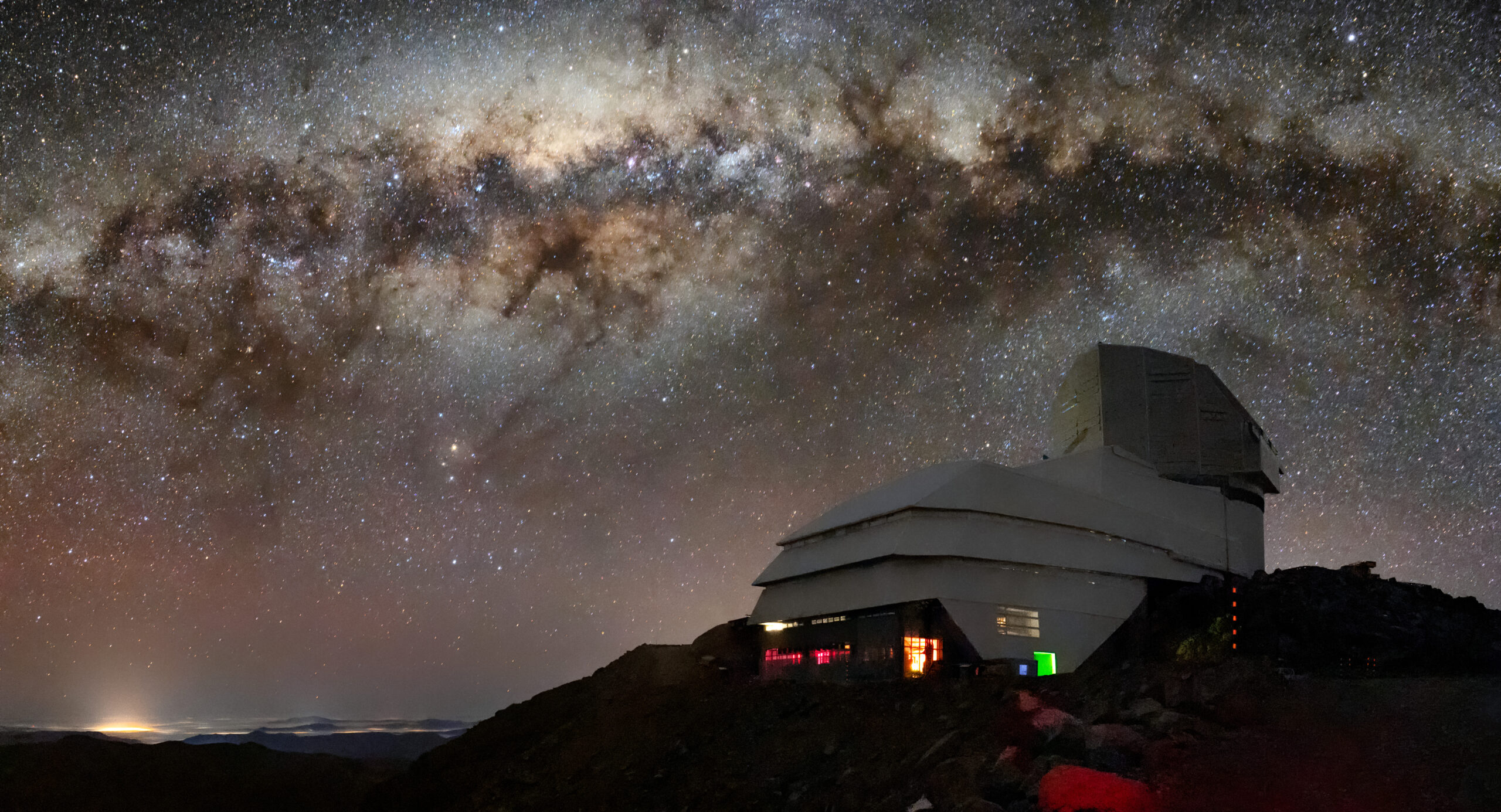
CATA researchers invite you to get closer to science through two interesting books
Millarca Valenzuela and Cristina Dorador made a small space in their research to reflect the topics of meteorites and microorganisms in their respective books, which offer a pleasant and entertaining way to approach these topics.
There is a growing interest of “ordinary” people, as they say colloquially, to get closer to science and satisfy their curiosity about different scientific topics. But this path may face some difficulties. On the one hand, it is not easy to explain topics that tend to be more arid, complex and abstract with pleasant and understandable language. Likewise, the interested party can find a universe of information, mainly through the Internet and social networks; however, this does not imply that these data are real, however plausible they may sound.
Researchers from the Center for Astrophysics and Related Technologies (CATA) Millarca Valenzuela and Cristina Dorador made a space in their work to prepare two books that bring people closer to extremely interesting topics, such as meteorites and microorganisms.
Cool Stones
Millarca is an Associate Researcher at CATA in the area of exoplanets and astrobiology and focuses on the investigation of planetary formation through the research of meteorites. His studies include the exploration and characterization of impact structures in Chile and the development of the first Chilean camera network for fireball monitoring and recovery of these rocks.
She has more than enough merit to write “Meteorites, stories between the sky and the ground”, together with the researcher and communicator Gabriel León.
“The original idea was Gabriel’s, not mine. He was sitting at home on the beach and he saw a shooting star and he remembered that we had talked about it and he asked himself a lot of questions. Like, what if one fell right here in Cahuil, whose would it be, where does it come from, what is it made of? So he contacted me to do a book of revelation, but in a conversational mode. So I flowed with my complete enthusiasm and conviction that these are the ‘coolest’ rocks in the universe, or at least in the solar system,” says the also Investigator of the Universidad Católica del Norte, who recognizes herself as an atypical geologist because of her love for terrestrial and extraterrestrial rocks.
Cristina Dorador had a similar motivation to bring to paper her book “Microbial Love, how our feelings are molded in the microscopic world”.
“What I was looking for was to make known the little-known world of microorganisms from a broad perspective and that could reach many audiences. In that sense, I explain love – which is a very important topic for all people – from a microbial perspective. For two decades I have been dedicated to microbial ecology, which is the study of microorganisms (bacteria, archaea, fungi, viruses) in the environment, especially in extreme environments. During this time I have been able to participate and carry out various science outreach activities, where I have been able to learn and develop different communication tools. The book is also the result of all these years of work and study”, argues the microbial ecologist who is an Associate Researcher at CATA.
¿What will we find?
Both publications seek to give a playful, close and entertaining approach to the topics they address, so that the reader can connect with them and awaken a greater interest in science.
“With respect to what readers will find in the book, there are biographical aspects of how I was introduced to the subject of meteorites, first from astronomy and later from geology, interspersed with the history of meteorites worldwide. That is, how these rocks went from being considered as condensations of clouds at some point or celestial objects that were given a divine character, to be an object of scientific study. There are also many tasty anecdotes about what they have generated over time, what their impact has been on people, and the good and bad practices surrounding them. It is a very easy book to read, very entertaining. I think it can be excellent, for example, for young people who are trying to discover their vocation, especially those with scientific interests, and it is also ideal for the general public. Simply because they are very interesting stories about these rocks that I believe will leave no one indifferent”, emphasizes the CATA Associate Researcher.
Regarding the expectations that her book on microorganisms may generate, Cristina Dorador invites you to let yourself go. “It contains the main current topics of microbial ecology linked to the human and environmental microbiome. What unites the texts is microbial love, a concept that summarizes the invisible and microscopic link with microorganisms that is key to understanding human relationships. This is a novel topic since, in general, there are few books on microbial ecology in Spanish that also have a local and global narrative,” says the researcher from the Universidad de Antofagasta.
¿Why read it?
About “Microbial Love, how our feelings are molded in the microscopic world” Cristina Dorador emphasizes that it is “for all those who are naturally curious and interested in learning more about microbial life and its intricate networks. It also intersperses stories and literary styles that can be engaging and surprising. It is essential that scientific knowledge is available to all people. It is our duty as scientists to build bridges and networks to democratize knowledge. People learn in different ways and most of them do it by reading, so I hope that this text will be a contribution and inspiration for many people and young scientists as well”.
A vision shared by Millarca. “We Chileans are identifying more with astronomy. We have the clearest skies to keep our eyes on the Universe and to increase interest in it. You have to read it, because it somehow marks something iconic of our land and our culture. Maybe people still do not realize that the Atacama Desert is one of the places with more meteorites on Earth. Therefore, the eyes of many meteorite hunters from all over the world are set on Chile. It is a natural heritage that belongs to us, because they fell here, but they are not protected and, therefore, they are being taken away to be commercialized or studied in other places, thus losing many possibilities to increase the science we can do with them. In addition, the materials that make them up may contain organic molecules that may have been the building blocks of life. In other words, they hold keys to understanding the origin of life, not only on Earth, but also in other parts of the solar system”.
The CATA Associate Researcher deepens in this reflection that she seeks to reinforce with her book “Meteorites, stories between the sky and the ground”.
“We have the Group of Meteorites and Planetary Sciences of the Geological Society of Chile, to protect, to preserve this material, so that at least a part of each meteorite remains in Chilean repositories, such as the one that exists at this moment in Valdivia, at the Austral University of Chile, which is called Pelom Kura (Piedra Luz in Mapudungun). So, it is to promote that, that Chileans know about a natural heritage that is ours, that is important to know and that we can defend it”, he concludes.
Recent news
-
 Publicado el: 09/07/2025Patricia Tissera is recognized as full professor by the Pontificia Universidad Católica de Chile
Publicado el: 09/07/2025Patricia Tissera is recognized as full professor by the Pontificia Universidad Católica de Chile -
 Publicado el: 04/07/2025CATA researchers among the best in Chile according to international ranking Research.com
Publicado el: 04/07/2025CATA researchers among the best in Chile according to international ranking Research.com -
 Publicado el: 30/06/2025CATA Director strengthens ties in her second institutional tour
Publicado el: 30/06/2025CATA Director strengthens ties in her second institutional tour -
 Publicado el: 30/06/2025CATA celebrated Asteroid Day 2025 at the Pueblito de Las Vizcachas Park
Publicado el: 30/06/2025CATA celebrated Asteroid Day 2025 at the Pueblito de Las Vizcachas Park -
 Publicado el: 26/06/2025Vera C. Rubin: the telescope that watches the sky and anticipates the future of astronomy
Publicado el: 26/06/2025Vera C. Rubin: the telescope that watches the sky and anticipates the future of astronomy
Categories list
- Acknowledgments 20
- Astrobiology 5
- AstroCluster 1
- Black holes 13
- Corporativo 49
- Cosmology 4
- Descubrimientos 19
- Disclosure 46
- Exoplanets 13
- Extension 4
- Galaxies 17
- Galaxies formation 2
- Inter y Transdisciplina 2
- Local Universe 13
- Publications 5
- Sin categorizar 31
- Solar System 11
- Stellar formation 6
- Technology 9
- Technology Transfer 12

